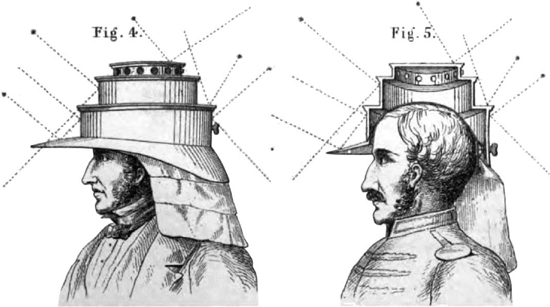
These figures are taken from a talk given to the Royal United Services Institute (R.U.S.I.) in 1860 whose subject was ON IMPROVEMENTS IN HELMETS AND OTHER HEADDRESS FOR BRITISH TROOPS IN THE TROPICS, MORE ESPECIALLY IN INDIA. These drawings, of a civilian hat, were selected to illustrate, up front, the impracticality of this eccentric’s proposed implementation of his theories.
Julius Jeffreys, a Victorian doctor, was an HEIC Staff-Surgeon of Cawnpore and Civil Surgeon of Futtehgurh in India during the 1820s and 1830s. He was a prolific author, traveler, inventor and a champion of the welfare of British troops serving in India and the Tropics. However, although his theories were often of great merit the execution of them was sometimes quite impractical to say the least. One has to add to that his inability to express himself in a concise and readable manner, to which this author can attest having ploughed through a good deal of this man’s turgid prose.
To return to real subject matter of this article, the military sun helmet, Jeffreys was a forceful voice in the importance of ventilation and reflectiveness in such headdress. In his dissertation to the R.U.S.I., in 1860, he stressed the need for adequate ventilation and presented an example of his helmet design, a prototype which was made by Christy & Co., a well-established London hat and cap manufacturer. Christy & Co. were subsequently sued over a patent infringement by Ellwood & Sons in 1864 for producing a double shelled helmet (see http://www.militarysunhelmets.com/2012/ellwoods-patent-of-1851-for-the-air-chamber-helmet).
This design exhibits not only a double-shell with ventilation through each, but an adjustable headband. Note also the double-shell extends
to the peak, nape and brim with its own ventilation. The top ventilator could also be shut off for wear in cold climates. But let Julius explain for himself.
Julius also proposed a metallic covering to the interior of the outer shell and to both surfaces of the inner shell. He suggested that the “new” aluminium foil or a gold foil could be employed – what the authorities may have thought of the use of gold foil is open to speculation, as does his estimate of 25 shillings per helmet (a huge sum at that time). In this use of foil he was far ahead of his time as in 1933 Guy Pascoe Crowden took out a patent for the application of metal foil to the interior of the crown of the Wolseley helmet. It is not known just how effective this foil application was but a 10-15 ° Fahrenheit reduction was claimed in the patent application. The Royal Army Ordnance Corps Gazette of April 1937 also reported successful trials of helmets with the foil lining. It should be noted that experiments with foil lining were performed in the late 19th Century but given the almost complete lack of survivors it can be assumed that they were not a success.
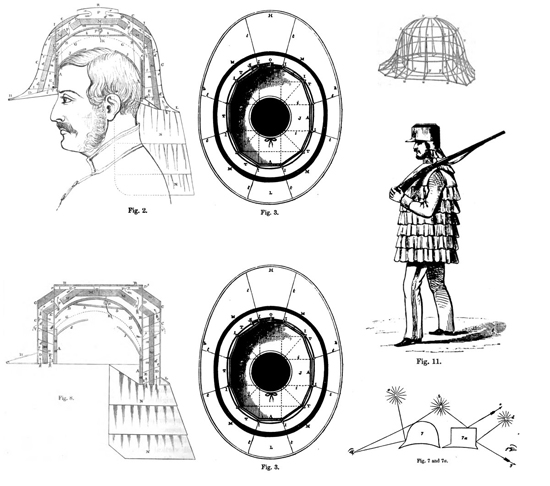
Some further drawings of Julius Jeffreys thoughts on improving the welfare of British troops serving in the tropics.
I have to admit to a somewhat begrudging admiration for Julius Jeffreys. Begrudging because although his ideas and intentions were admirable, his execution was so often his downfall. I could write a book on Julius, so much have I been captivated by this fellow, however the thought of wading through his turgid prose soon negates any such thoughts. But let us leave the last word to his contemporaries.
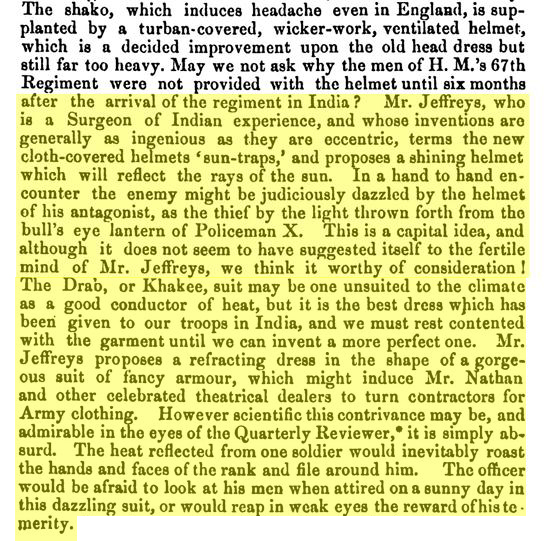
An extract from a talk given to the Royal United Service Institute after the publication of Julius Jeffreys’ book The British Army in India of 1858.
Stuart Bates

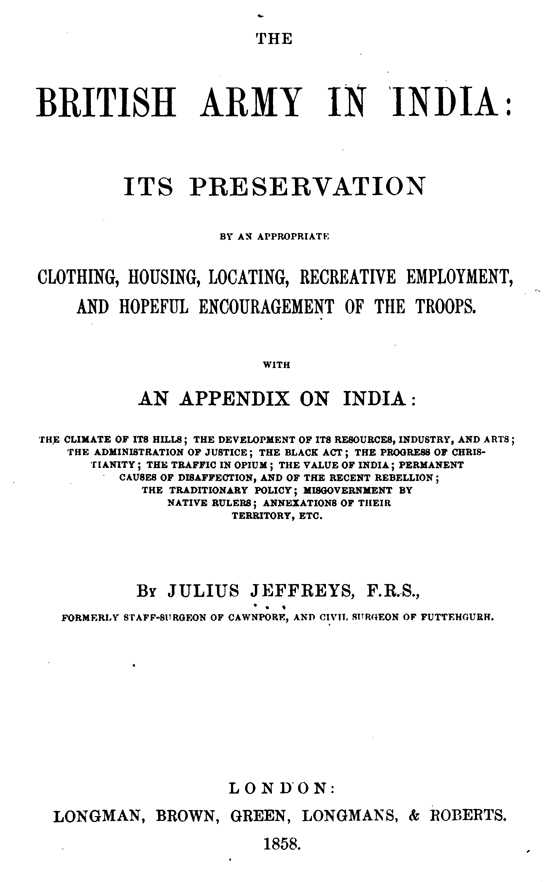


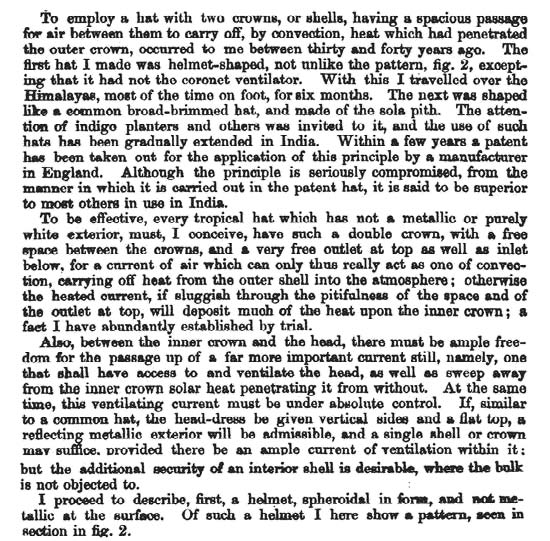
Thanks Stuart
Further proof that the British military hierarchy used the toss of a coin to decide, certify or commission.